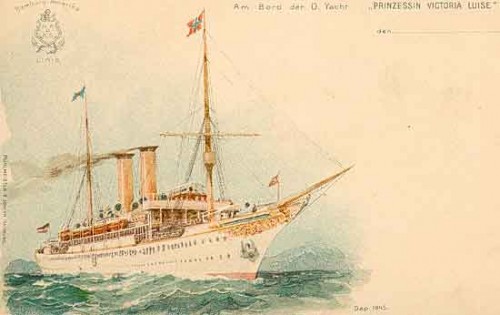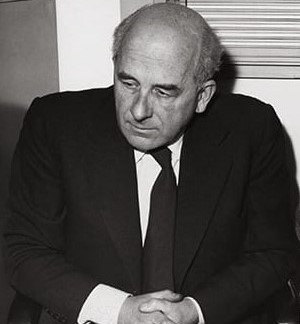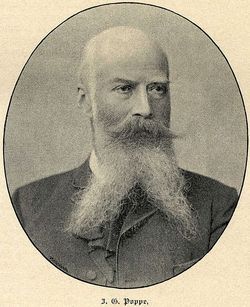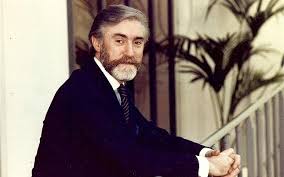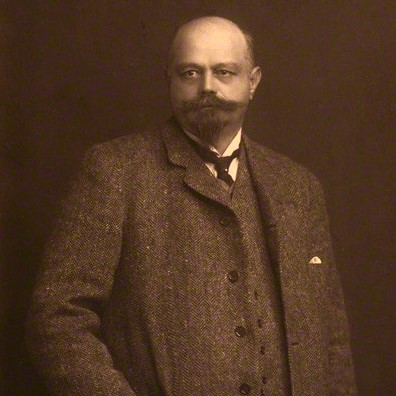Albert Ballin started his career with HAPAG (Hamburg Amerikanische Paketfahrt Aktien Gesellschaft) as manager of the passage department and within two years rose to Managing Director. Ballin noted that the company’s flagship Auguste Viktoria spent all winter in lay up, thus not making any money. Of course the reason for this was that passengers avoided the inclement stormy weather and the rough seas which made life miserable on board on the North Atlantic during winter season.

Ballin thought of organizing cruises (at the time called excursions) to the Mediterranean and the Orient in the off season to keep his ships busy. His fellow directors didn’t think much of the idea, but Ballin persisted and in 1891 the Auguste Viktoria was sent on a 58-day trip from Cuxhaven to the Med and the Orient. In each port excursions were organized for the wealthy passengers to explore the ports and regions that were visited. Ballin himself and his wife Marianne also joined, as Ballin wanted to experience first hand if his “experiment” was a success. And it was.

There was one practical problem however, Augusta Viktoria was originally a liner built for North Atlantic service, which meant that it had limited deck space. Also life onboard a cruise ships differs from that on a liner so extra facilities were needed. Now the cruise-concept had proven successful, Ballin decided that a dedicated cruise ship was needed, which could spend all of its time on leisure trips around the globe. Having risen to CEO of HAPAG, Ballin ordered such a vessel from the German yard of Blohm and Voss in Hamburg.

It would be named after the Kaiser’s daughter Prinzessin Viktoria Louise. She would have the exterior of a yacht, thus emphasizing it being a dedicated cruise ship. In fact Prinzessin Viktoria Louise would have the honour of being the world’s first purpose built cruise ship. She was modelled after the German imperial yacht Hohenzollern.

Ballin had shared his ideas with the Kaiser who had a keen interest in shipping and some of the Kaiser’s suggestions were incorporated in the vessel. The German Emperor was a frequent visitor to Ballin’s impressive villa at the Feldbrunnenstrasse in Hamburg. Later, when he inspected the Prinzessin Viktoria Louise, the Kaiser was not amused that she was slightly larger than his own yacht. She measured 4409GRT and had a length of 407ft, two masts fore and aft and two funnels midships. Her clipper bow featured a bowsprit with a figurehead of Prinzessin Viktoria Louise.

Targeting wealthy passengers, her 120 cabins had been decorated with the finest materials. Apart form standard public spaces like a main lounge, dining room gymnasium and a library, also a dark room was available so passengers film and photographs could be developed and printed.

Prinzessin Viktoria Louise left Hamburg on January 5, 1901 for her maiden voyage to New York via France and Britain. From there she sailed for the West Indies followed by a cruise to the Mediterranean and the Black Sea. She would become also a familiar sight in the Baltic. During her short career she only made a handful of transatlantic crossings.
Alas, she only lasted for a mere five years as in 1906, while leaving the port of Kingston, Jamaica, her commander captain Brunswig made a fatal error, because instead of entering Kingston, he decided to anchor of Port Royale but in the process thought the lighthouse of Plumb Point for that on the most western point of Port Royal. Prinzessin Viktoria Louise hit the rocks and despite several attempts to free the ship, she remained firmly stuck. The startled passengers were evacuated without casualties.

The captain who had remained on board after the evacuation, retreated to his quarters and shot himself. Later, he was found guilty by the Admiralty court of wrecking the ship due to a navigational error.
Soon, the ship was inspected for salvage, but her hull showed structural damage, she was partly flooded and her engines had come loose. So she was declared a total loss.
Ballin continued his most successful career with HAPAG, which culminated in his trio of transatlantic superliners Bismarck, Imperator and Vaterland. In fact he introduced HAPAG’s motto “Mein feld ist die Welt”, meaning the world is my working ground. And indeed, he had built a company serving over 70 shipping routes with 175 ships and with a workforce 0f 25,000. Furthermore, he had aimed for a wealthy clientele as he emphasized luxury onboard his ships. These passengers expected the same level onboard as in their palatial homes and the luxury hotels they were used to staying in. So HAPAG followed its rival Norddeutscher Lloyd in substituting the Victorian, dark and uninviting interiors present on most liners by introducing an “hotel-like” onboard atmosphere. To accomplish this, like Norddeutscher Lloyd, he hired interior architect Johann Poppe starting with HAPAG’s Auguste Viktoria. Other lines were mostly interested in winning the Blue Riband, the prize for the fasted North Atlantic liner, but Ballin focused on comfort and luxury onboard his ships.

When te end of WWI came near, Ballin, who had been a vigorous opponent of this conflict, realized that his life’s work, making HAPAG a prosperous line, had come to nothing as most of his fleet was destroyed or would later be handed over to the allies as war reparations. At the age of 61 he took an overdosis of sleeping pills never to wake up again.
With Prinzessin Viktoria Louise, the world’s first purpose built cruise ship and by introducing a different style of passenger ship interiors, Ballin has realized ground breaking progress in passenger (cruise) shipping.
